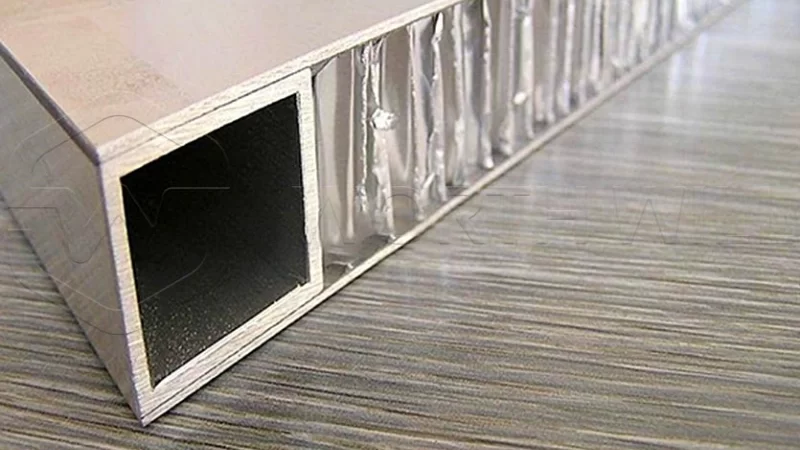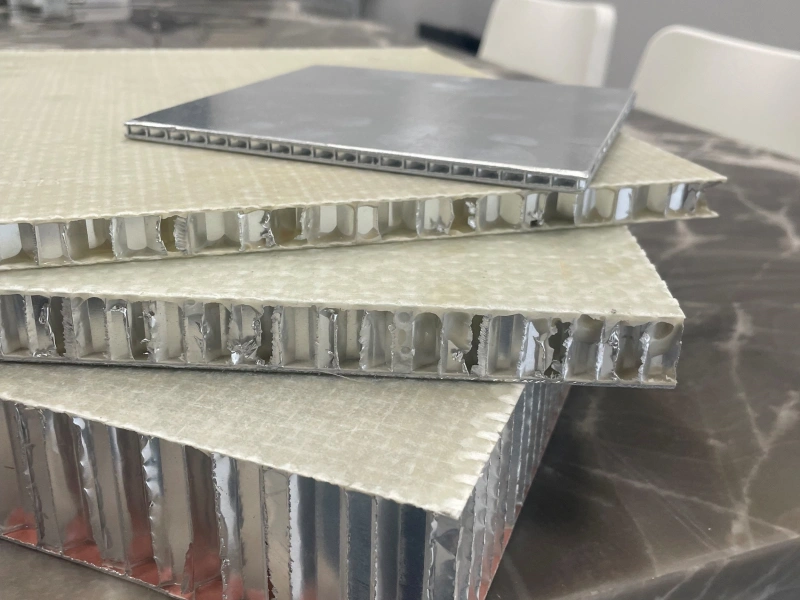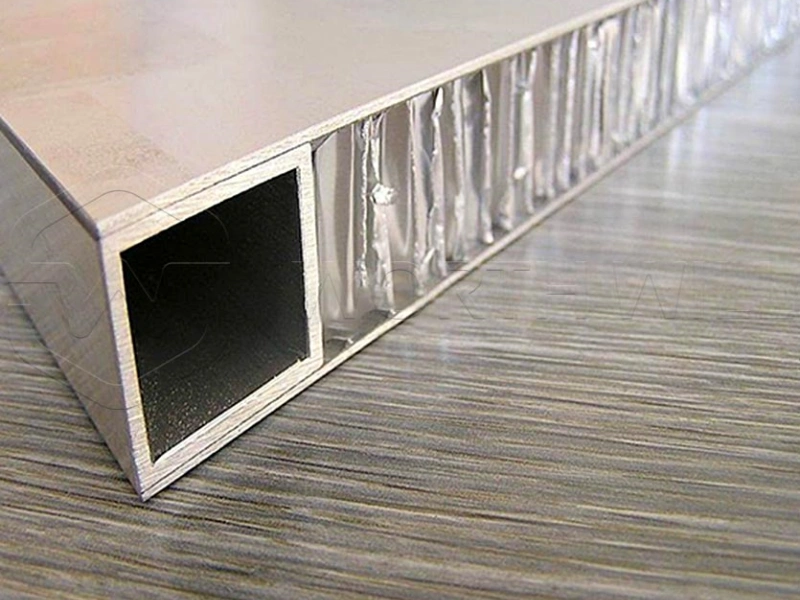Aluminium honeycomb is a lightweight, high-strength core material used in various industries like aerospace, construction, and automotive. If you’ve ever wondered how this clever material is made, you’re in the right place.
Specification Table
| Parameter | Details |
|---|---|
| Classification | Expanded Aluminum Honeycomb Core |
| Thickness | 3mm – 100mm |
| Alloy | 3003 / 5052 / 6061 |
| Cell Size | 3mm, 6mm, 9mm, 12mm, customized |
| Core Density | 20 – 100 kg/m³ |
| Surface Treatment | Mill finish, anti-corrosion coated |
| Packaging | Palletized sheets, carton boxes, customized |
Aluminium Honeycomb Specifications
Aluminium honeycomb comes in various specifications to meet different industrial needs. Understanding these specifications is crucial for choosing the right material for your project.
| Specification | Description | Common Ranges/Types |
|---|---|---|
| Classification | Aluminium honeycomb can be classified by its cell size, foil thickness, and whether it’s perforated or non-perforated. Perforated honeycomb allows air or gas to flow through. | Cell sizes from 1.8mm to 25mm. Perforated, Non-perforated. |
| Thickness | This refers to the overall height of the honeycomb core. It’s a key factor in the panel’s stiffness and strength. | From 3mm to 300mm (or more for special orders). |
| Alloy | The type of aluminium alloy used affects the honeycomb’s properties, such as strength, formability, and corrosion resistance. | Commonly 3003 series (standard strength) or 5052 series (higher strength, better corrosion). |
| Packaging | How the honeycomb is packed for shipping and storage depends on its form. Expanded sheets are usually laid flat. Unexpanded blocks are more compact. | Flat on pallets, in wooden crates, or specialized containers. |
How is Aluminium Honeycomb Made?
The manufacturing process of aluminum honeycomb involves several precise steps:
1. Foil Preparation
-
Thin aluminum foil is coated with adhesive lines.
-
Common alloys used: 3003 H18 or 5052 H19.
2. Stacking and Bonding
-
The adhesive-coated foil is stacked in layers.
-
Heat and pressure are applied to bond the lines together.
3. Expansion
-
After curing, the stacked block is expanded like an accordion.
-
This forms the characteristic hexagonal honeycomb structure.
4. Cutting and Trimming
-
The expanded block is sliced to the required thickness.
-
Edges are trimmed to ensure uniformity.
5. Optional Surface Treatments
-
Corrosion-resistant coatings can be applied.
-
Some honeycombs are coated with primer or fireproof layers.
Why Choose Aluminium Honeycomb?
| Advantages | Details |
|---|---|
| Lightweight | High strength-to-weight ratio |
| Corrosion Resistance | Excellent in harsh or humid environments |
| Fire-Resistant | Non-combustible, suitable for interiors |
| Customizable | Available in various cell sizes and thickness |
| Sustainable | Recyclable aluminum material |
Applications of Aluminium Honeycomb
Aluminum honeycomb panels are widely used in:
-
Aerospace Industry
Aircraft floors, bulkheads, and control surfaces -
Construction and Architecture
Building facades, ceilings, partitions, curtain walls -
Transportation
Truck and trailer bodies, train walls and floors -
Marine Applications
Boat hulls, partitions, and furniture panels -
Energy and Wind Turbines
Wind blade cores and turbine housings -
Furniture and Interior Design
Lightweight tabletops, counters, shelves
Common Cell Sizes and Uses
| Cell Size | Ideal Use |
|---|---|
| 3mm | Aerospace interiors, electronic shielding |
| 6mm | Architectural cladding, ceilings |
| 9mm | Furniture, transport panels |
| 12mm | Industrial and marine structures |
FAQs
Is aluminum honeycomb strong?
Yes. It offers excellent compressive and shear strength while remaining lightweight.
Can honeycomb panels be customized?
Absolutely. You can customize alloy, cell size, thickness, and surface treatment.
Is aluminum honeycomb environmentally friendly?
Yes, it’s fully recyclable and contributes to green building practices.
Advantages vs. Alternatives
| Feature | Aluminium Honeycomb | Foam Core | Solid Aluminium |
|---|---|---|---|
| Weight | ✅ Ultra-light | Light | Heavy |
| Strength | ✅ High strength-to-weight | Low | Very high |
| Cost | $$ Moderate | $ Cheap | $$$ Expensive |
| Thermal Insulation | ✅ Good | Excellent | Poor |
Frequently Asked Questions
| Question | Answer |
|---|---|
| Can aluminium honeycomb be recycled? | Yes, 100% recyclable |
| What’s the max temperature resistance? | 300°C (with special adhesives) |
| Is custom cell size possible? | Yes, 3mm to 30mm+ |
| How long does production take? | 2-4 weeks for standard orders |
Why Choose Aluminium Honeycomb?
Choosing aluminium honeycomb means choosing efficiency. Its ability to deliver high performance at a reduced weight makes it an economical and sustainable choice. It helps reduce fuel consumption in vehicles and aircraft, lowers transportation costs, and simplifies installation in construction. Furthermore, aluminium is a recyclable material, making honeycomb an environmentally friendly option.
Contact for Aluminium Honeycomb Panels
WORTHWILL ALUMINUM offers high-quality aluminum honeycomb core and sandwich panels with customizable options.
📧 Email: jane@wwaluminum.com
📞 WhatsApp: +86 15736973771
🌐 Visit: www.wwaluminum.com


